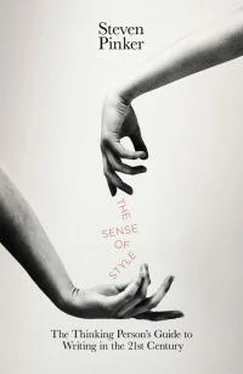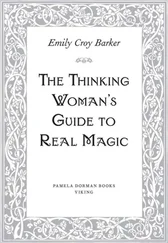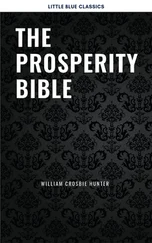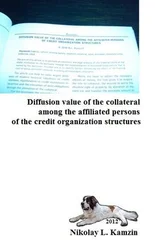What happens with other words that join nouns together, like with, plus, and or ? With is a preposition, so the phrase a man with his son is not a coordination at all but an ordinary phrase with the head a man, modified by with his son. It inherits the singular number of its head, so we say A man with his son is coming up the walk. The word plus began as a preposition, and again we say All that food plus the weight of the backpack is a lot to carry. But plus is increasingly being used as a coordinator as well, and it’s natural to say The hotel room charge plus the surcharge add up to a lot of money .
And then we have to figure out what to do with or (an issue we met on page 207). A disjunction of two singular nouns is singular: Either beer or wine is served. A disjunction of two plurals is plural: Either nuts or pretzels are served. With a disjunction of a singular and a plural, traditional grammar books say that number agreement goes with the noun closest to the verb: Either a burrito or nachos are served; Either nachos or a burrito is served. But that policy leaves many writers queasy (the Usage Panel divides up the middle on it), and it may be best to spare readers from stretching their grammatical intuitions and recast the sentence, such as They serve either nachos or a burrito.
Certain nouns specify a measure and then indicate what they’re measuring using an of- phrase, such as a lot of peanuts, a pair of socks, and a majority of the voters. These Zelig-like nouns can be singular or plural depending on the number of the of- phrase: A lot of work was done; A lot of errors were made. (It’s possible that their trees differ, with a lot being the head of the phrase in the first version but a determiner of the head errors in the second.) When the of- phrase is absent, the writer mentally supplies it, and the phantom phrase determines the number: A lot [of people] were coming; A lot [of money] was spent. Other chameleonic quantifiers include couple, majority, more than one, pair, percentage, plenty, remainder, rest, and subset.
And then there is the puzzling construction one of those who . Recently I endorsed a book by Douglas Hofstadter and Emmanuel Sander with a blurb that began, “I am one of those cognitive scientists who believes that analogy is a key to explaining human intelligence.” Hofstadter thanked me but sheepishly asked if I would mind correcting who believes to who believe . I even more sheepishly agreed, because Hofstadter (as his readers might expect) was engaging in impeccable tree-thinking. The relative clause beginning with who is attached to the plural cognitive scientists, not the singular one: there is a set of cognitive scientists (plural) who value analogy, and I belong to that set. So it must take the plural verb believe.
Though I couldn’t defend my original wording, it still sounded fine to my ears, so I did a bit of research on the construction. It turns out I am not alone. For more than a thousand years the siren song of singular one has overridden the syntactic demand of the plural those, and writer after writer has gone with the singular. This includes the über-purist James Kilpatrick, who to his chagrin repeatedly found himself using it even after having been corrected by the UofAllPeople Club. (He wrote, for example, “In Washington, we encounter ‘to prioritize’ all the time; it is one of those things that makes Washington unbearable.”) Often the technically correct version sounds off-kilter. More than 40 percent of the Usage Panel rejected The sports car turned out to be one of the most successful products that were ever manufactured in this country. Sometimes the dilemma can be sidestepped by artful rewording (in this example, deleting that were ), but not always. In Tina is one of the few students who turns to the jittery guidance counselor, Emma, for help with her feelings, a switch to turn would require a parallel switch of her feelings to their feelings, which makes it seem as if each girl sought counseling for all the girls’ feelings, not her own.
The Cambridge Grammar suggests that the construction is a hybrid of two trees that mingle in the reader’s mind: one in which the relative clause is attached to the downstairs noun ( cognitive scientists who believe ), and it determines the meaning, and one in which it is attached to the upstairs noun ( one … who believes ), and it determines the number agreement. Usage guides today suggest that either the singular or plural is acceptable in this construction, depending on whether one or those looms larger in the writer’s mind. 43
duals and plurals ( between/among and other distinctions between two and more than two).Many languages distinguish three quantities in their number system: singular (one), dual (two), and plural (many). Hebrew, for example, distinguishes yom, “day,” yomayim, “two days,” and yamim, “days.” English doesn’t have dual number marking, but it does recognize twoness in words like pair and couple, and, with varying degrees of controversy, in other quantifying words.
between and among . Many students are taught that between must be used with just two items (since tween is related to two and twain ) and among with more than two: between you and me but among the three of us. This is only half right. It’s certainly true that among may not be used with a twosome: among you and me is impossible. But it’s not true that between is reserved for two: no one would say I’ve got sand among my toes, I never snack among meals, or Let’s keep this among you, me, and the lamppost. Nonetheless some writers have dutifully followed this pseudo-rule to the bitter end and have concocted fussy expressions like sexual intercourse among two men and a woman , a book that falls among many stools, and The author alternates among mod slang, clichés, and quotes from literary giants. The real principle is that between is used for a relationship of an individual to any number of other individuals, as long as they are being considered two at a time, whereas among is used for a relationship of an individual to an amorphous mass or collectivity. Thistles grew between the roses suggests an orderly row in a formal garden, and Thistles grew among the roses more of an entwined profusion.
each other and one another. A traditional rule of the same ilk assigns each other to twosomes and one another to groups larger than two. If you don’t trust your ear you will never get into trouble if you follow the rule, and that’s what a majority of the Usage Panel claims to do. But the common practice is to use them interchangeably— the teammates hugged each other, the teammates hugged one another— and the major dictionaries and usage guides say that’s fine.
alternatives. There is a claim in Prescriptistan that alternative refers only to two possibilities, never more than two. It’s a bubbe meise; forget it.
either and any. The twosome restriction is on firmer ground with either, at least when it is used as a noun or a determiner. The phrases Either of the three movies and Either boy of the three are decidedly odd, and either should be replaced with any . But when either is used in an either-or construction, threesomes are more acceptable, if not always graceful: Either Tom, Dick, or Harry can do the job; Either lead, follow, or get out of the way.
Читать дальше












